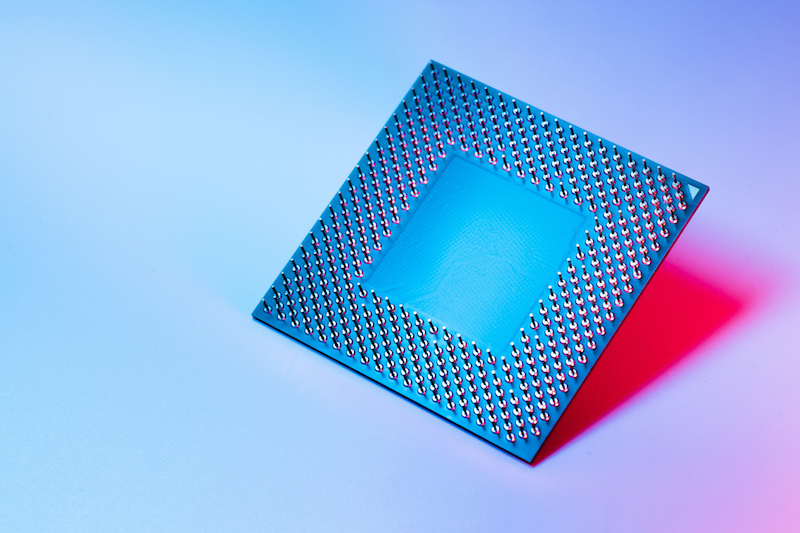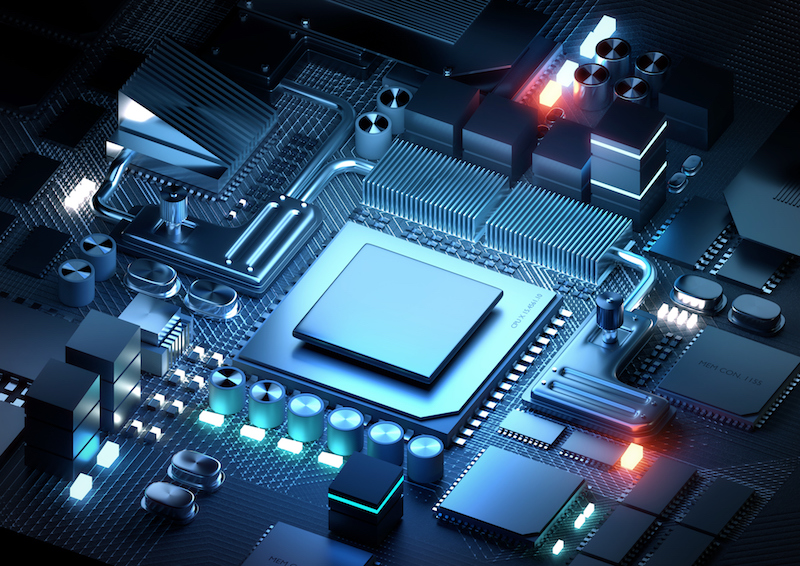Introduction To Microprocessor Programming
Maybe you’ve heard of microprocessors before but want a refresher on what they’re all about. Or maybe you’re someone who is brand new to microprocessor programming and want a beginner’s overview. Either way, you’ve come to the right place.
A microprocessor is an important part of a computer’s architecture, and without one, you would not be able to perform anything on your computer. It is a programmable device that performs the functions of a computer’s central processing unit (or CPU). The circuits within the microprocessor intercept and execute program instructions and perform arithmetic operations. In simple words, a microprocessor is a device which can fetch instructions from memory, decode them, and give results.
This article will provide an introduction to microprocessors and how to program them so you can walk away with a general understanding of their functions within the electronics world.

Microprocessor Basics
Before microprocessors were around, computers were built using racks of circuit boards, which consisted of medium and small-scale circuits. With the advent of microprocessors, these mechanisms were combined into one device, making the process more efficient and clean. The first commercially available microprocessor was the Intel 4004, which was released in 1971.
Basically, a microprocessor takes a number of instructions that are fed by the machine it's situated in and executes the commands, telling the processor what it has to do. The microprocessor performs basic operations like addition, subtraction, multiplication, division and some logical operations using its Arithmetic and Logical Unit (ALU). It can also move the data from one location to another, and it has a Program Counter (PC) register that stores the address of the next instruction based on the value of the PC. A microprocessor can also make decisions and jump to a new set of instructions to make those decisions.
Types of Microprocessors
There are different types of microprocessors designed for specific purposes. They are mainly classified into three major types:
1. CISC or Complex Instruction Set Computer
A computer architecture in which a single instruction can execute multiple low level operations like loading from memory, storing into memory or an arithmetic operation, etc. It has multiple addressing nodes within a single instruction. CISC makes use of very few registers.
2. RISC or Reduced Instruction Set Computer
A computer architecture where instructions are simple and designed to get executed quickly. Instructions get completed in one clock cycle because of the optimization of instructions and pipelining (a technique that allows for simultaneous execution of parts, or stages, of instructions to more efficiently process instructions). RISC makes use of multiple registers to avoid large interactions with memory. It has few addressing nodes.
3. EPIC or Explicitly Parallel Instruction Computing
This permits the computer to execute instructions parallel using compilers. It allows complex instruction execution without using higher clock frequencies. EPIC encodes its instruction into 128 bit bundles with each bundle containing three instructions, encoded in 41 bits each and a 5-bit template field. The field contains information about types of instructions in a bundle and which instructions can be executed in parallel.
How To Program Microprocessors
Once programmed, microprocessors can repeatedly perform the same task with precision and accuracy, making them an integral part of mechatronic engineering design.
Microprocessors understand machine code, but they will require a higher level programming language such as "C" or "Assembly" to write the program. An essential tool for programming a microprocessor is an Integrated Development Environment (IDE). This is software that is developed by the creators of the microprocessors which will compile the code into a language the machine can understand.
Once you have an IDE setup, you can begin writing your code. Afterward, you can test the program using the IDE simulation package. This is an important step because it allows you to test the code, make line-by-line executions, and it visually represents variables defined by the code. Debugging the code through the simulation software will help you avoid frustration later on if your program does not behave as expected. Once that step is done, you can hook up a universal stand-alone programmer to your computer. This device connects to your serial port and has a socket that fits up to 60-pin microprocessors. Then you can embed your program onto your microprocessor.
The Electronics Technician program at George Brown College has recently added a new module to the course curriculum outline that specifically details the basic theory and operation of microprocessors, including a further look at programming. The module also covers microcontrollers and an introduction to PC architecture, which would be incredibly valuable to you if you’re serious about gaining more insight into microprocessors.
Looking to the Future
Microprocessors have come a long way since the 1970s, and are now used in everyday objects such as mobile phones, cars, and home appliances. The fascinating and powerful little devices are responsible for keeping our lives on track and managing the things we might even take for granted.
If you’re interested in microprocessor programming and want to learn more, then check out George Brown College’s Electronics Technician Certificate program for online training.
Comments
I want to learn about programming microprocessors
Submitted by Arne Gammelgaa… (not verified) on Fri, 09/26/2025 - 02:36
Th electronics program has…
Submitted by Iris on Tue, 10/07/2025 - 09:21
Th electronics program has one module covering microprocessors. This module provides an overview of the basic theory and operation of microprocessors and their logical and programming characteristics. It will introduce the concepts of instruction sets, machine language programming, input/output, interrupts and interfacing techniques. Hardware and software aspects of popular 8-bit and 32-bit microprocessors are studied in detail. Specific topics include microprocessor architecture (registers, memory maps, status, program counter, and stack), logic operations, assembly language programming, embedded-systems design and an introduction to control algorithms. In addition, the module also covers microcontrollers and an introduction to PC architecture.
For further assistance, pleasecontact a Program Consultant, toll-free at 1-888-553-5333.


Do you have a specific course you could recommand me to follow?, i would also like to hear about the cost of such a course